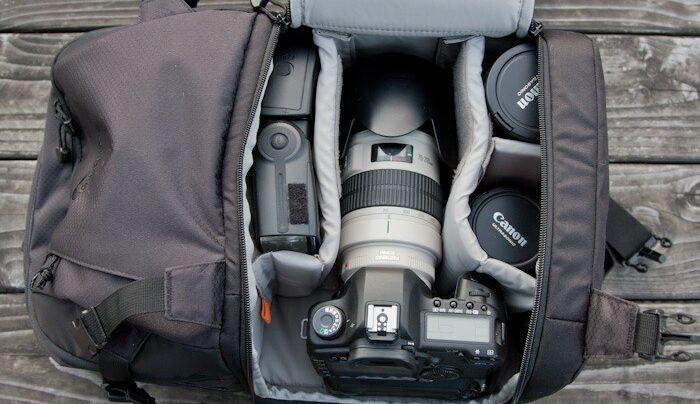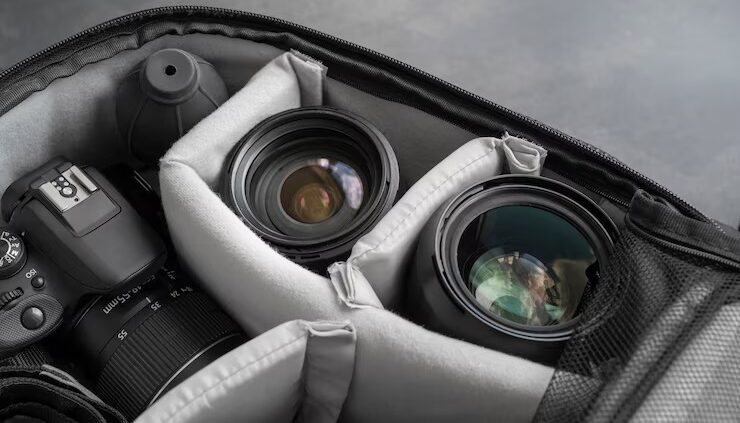Whether you are a hobbyist, an outdoor photographer, or a full-time professional, knowing how to protect photographic equipment is crucial to maintaining both the function and longevity of your gear.
From fragile lenses to expensive camera bodies, even the slightest impact or moisture exposure can cause significant damage.
In this comprehensive guide, we will walk through practical strategies to protect photographic equipment during transport, organize your gear efficiently, shield it from environmental conditions, and use proper protection techniques with durable cases.
The better you can protect photographic equipment, the longer it will serve you on demanding shoots, remote travel assignments, or casual weekend outings. Let’s dive into the best practices every photographer should follow.
Protect Photographic Equipment During Travel With The Right Bags
The first and most vital step to protect photographic equipment is selecting the right camera bag for travel. Not all bags are made equal, and the wrong choice can expose your gear to unnecessary risks.
Backpacks for photographers: These are ideal for travel and long days of hiking or urban exploration. A good backpack evenly distributes weight across your shoulders and back, helping reduce strain while offering padded compartments to hold multiple items safely.
Roller bags: If you often travel by air or carry large amounts of equipment, roller bags are a great solution. Their structured design and impact-resistant shells make them perfect for airport security checks and overhead bins.
Sling or messenger bags: These allow for faster access to your gear. While not ideal for heavy setups, they are popular for street photography where quick access is key.
Hard cases: For adventure photographers or commercial work, rugged hard-shell cases provide the ultimate way to protect photographic equipment. Waterproof seals, reinforced corners, and customizable foam interiors make them the safest choice for extreme conditions.
When choosing a bag, make sure it has adjustable dividers, weather-resistant materials, and lockable zippers to increase safety during travel.
Organizing Your Gear For Quick Access And Safety
How you arrange your gear inside your bag directly affects your ability to protect photographic equipment and also work efficiently on the go.
Disorganization not only wastes time but increases the likelihood of scratches, broken accessories, or missed shots.
Use padded dividers: Every lens, camera body, and accessory should have its own compartment. Dividers prevent gear from bumping into each other while in transit.
Pack based on priority: Items used more frequently should be placed where they are easily accessible. For example, your primary camera and walk-around lens should be on top, while spare batteries and chargers can be stowed at the bottom.
Label your accessories: In multi-compartment bags, small pouches for SD cards, lens caps, filters, and cords should be clearly marked or color-coded. This not only saves time but also helps you spot missing items immediately.
Avoid overpacking: A crammed bag places excessive pressure on internal components. Leave some breathing room so zippers can close comfortably, and no part of your gear is under tension.
Staying organized is not just a matter of convenience—it’s a key part of how professionals protect photographic equipment in daily routines.
Protect Photographic Equipment From Weather Conditions And Moisture
Nothing threatens your gear more quickly than uncontrolled exposure to weather. Whether you’re facing tropical humidity, sudden rain showers, or snow-covered landscapes, it’s vital to protect photographic equipment from environmental hazards.
Rain covers: Many backpacks include detachable rain covers, but dedicated camera rain sleeves are even better. These transparent covers let you shoot in the rain while keeping your camera dry.
Dry bags for water activities: If you’re photographing on a boat, by waterfalls, or near the sea, dry bags provide an airtight and waterproof layer to protect photographic equipment from splashes or submersion.
Moisture-absorbing silica packs: Place these inside your bag or lens compartments to fight humidity. They’re especially important in tropical climates or during sudden temperature changes which may cause condensation inside lenses.
UV filters for lens protection: A simple UV filter can act as the first line of defense for your lens glass. It’s easier and cheaper to replace a scratched filter than an entire lens.
Keep gear off the ground: Even mildly wet surfaces can wick moisture into your gear bag. Use a strap hook or place your bag on a waterproof mat when setting up for extended shoots.
Preparing for the worst helps you consistently protect photographic equipment even in unpredictable outdoor scenarios.
Tips For Organizing Camera Bags With Padding To Prevent Equipment Damage
Physical shock is one of the most common causes of damage to gear. Whether you’re moving through crowded streets or rough terrains, using the right protective materials helps protect photographic equipment from jolts, drops, and vibration.
Foam inserts: High-density foam compartments cradle your gear snugly and prevent internal movement. Custom cut-outs for each camera body and lens provide the most secure fit.
Lens pouches and wraps: These add another layer of security, especially if your bag doesn’t offer tight compartments. They’re also great for storing lenses inside suitcases or carry-ons when you want flexibility.
Velcro and zip closures: Loose items can scratch your gear. Store filters, cables, and tools in individual zipped pouches within the main compartment.
Tripod and stand attachment loops: A quality camera bag will let you secure your tripod externally, without needing to stuff it inside. Keeping sharp or hard items like tripods separated is essential to protect photographic equipment from wear and tear.
Shock-absorbing bag bases: Bags with reinforced bottoms absorb drops when bags are set down too forcefully, reducing the transfer of impact to sensitive electronics inside.
If your bag lacks sufficient padding, consider third-party inserts or custom foam dividers designed to fit specific camera models.
Protect Photographic Equipment With Lightweight And Durable Cases
Balancing weight with durability is another challenge when you aim to protect photographic equipment during travel. While heavier cases offer better protection, they can slow you down and cause fatigue on long journeys.
That’s why choosing the right combination of lightness and resilience is essential.
Polycarbonate hard-shell cases: These offer impact resistance without adding too much weight. They’re great for checked luggage or when transporting gear in vehicles.
Aluminum and composite builds: Rugged yet relatively light, these cases are popular with traveling filmmakers and sports photographers. They also stack well, making them perfect for studio moves or large assignments.
Backpacks with carbon-reinforced frames: For fieldwork, opt for bags with built-in structural support. They keep shape integrity and reduce internal pressure on equipment.
Minimalist cases for short sessions: If you’re heading to a quick indoor shoot, a slim and padded camera sleeve might be all you need. This keeps your gear mobile while still offering a base level of protection.
Hybrid travel gear: Some bags now combine rolling wheels with backpack straps, giving flexibility for varied terrain and load capacity. These help you protect photographic equipment while adapting to different trip types.
Ultimately, the best solution isn’t the heaviest or most expensive case—it’s the one that provides sufficient protection while fitting your workflow and travel needs.
To sum up, every photographer should develop a personal strategy to protect photographic equipment from theft, damage, moisture, and disorganization.
From the choice of bag to compartment layout, from weather shielding to smart case selection, each step contributes to safer gear and better photography outcomes.
When you consistently apply the practices above, not only do you protect photographic equipment from harm, but you also save time, reduce replacement costs, and ensure you’re always ready to capture the perfect shot—anywhere, anytime.
See you in the next post,
Anil UZUN

